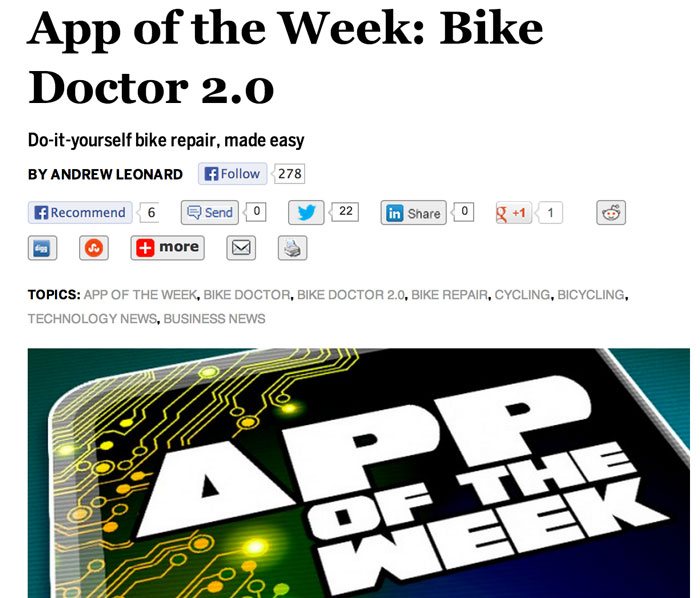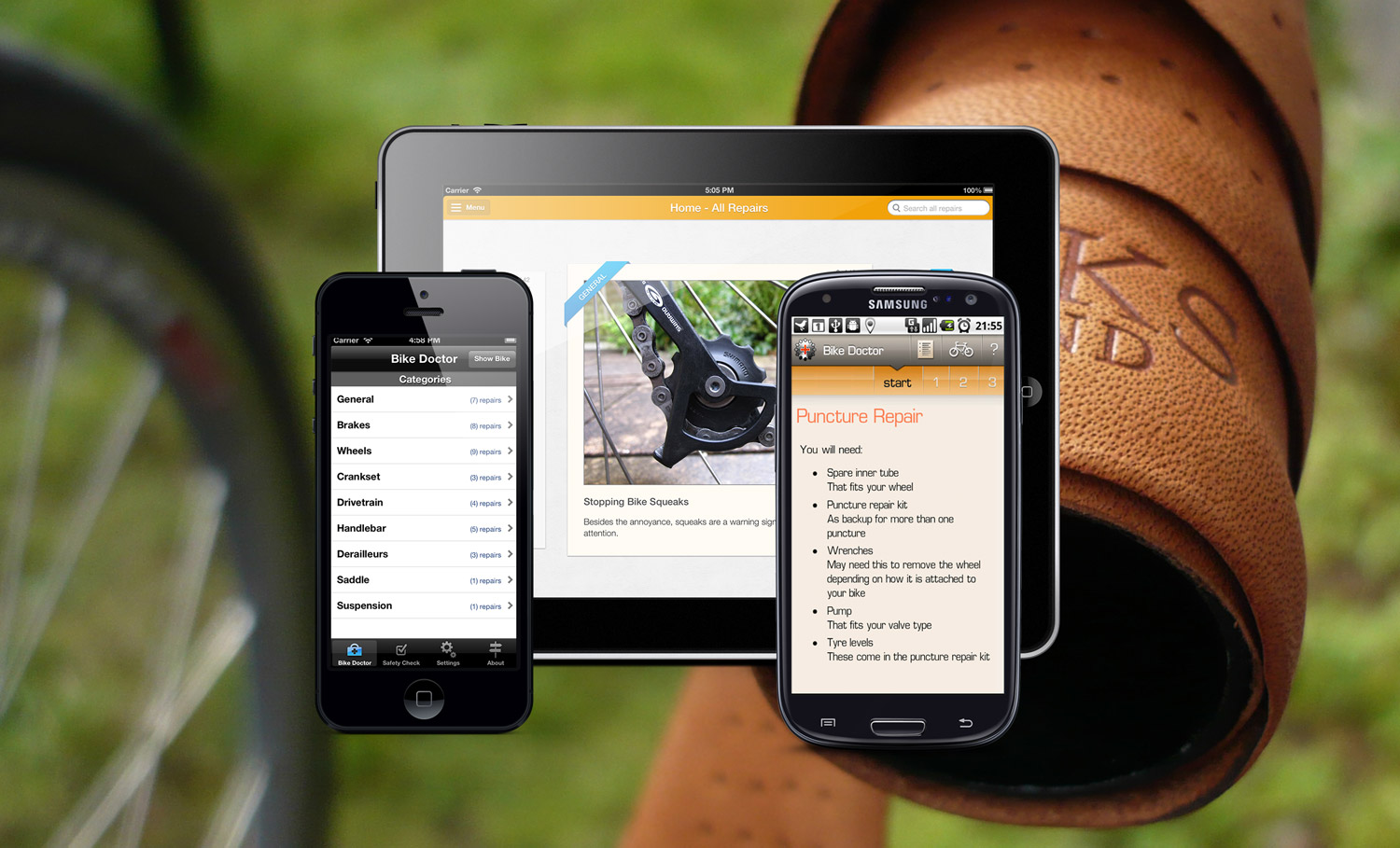With the BikeDoctor app, you can confidently complete everything from simple puncture repairs, to wheel truing and replacing gear cables. However, we’re big believers in starting small and building up your skill-set. Here are 10 areas to get you started.
M-Check
The M-Check is a simple way to check over your bike to ensure everything is in safe working order. The “M” is from the shape of the path you take over your bike as you check for problems.
Start at the front wheel and check that it is tight. Then, move on to the front brakes, pedals, saddle, rear brakes and rear wheel. Make sure all these parts are tight and move as they should without any rubbing or wobble.
This is a good check to complete if you’ve left your bike out for a while.
The BikeDoctor app shows you step by step how to complete the M-Check.
Tyre Pressure
Flat tyres are more likely to result in punctures and make it tougher to convert your pedal power in to forward motion. On the side of your tyre the pressure will be printed. As long as you have a pump with a pressure gauge, you’ll be able to see if your tyres are at the correct inflation levels. As a basic test, when you push hard with your thumb on the tyre, it shouldn’t give way.
Replace Bicycle Brake Pads

Bicycle brake pads wear out frequently, so it’s one of the most useful repairs to figure out as a cyclist. Using them after they are worn out will result in your scratching your wheel rims, which are expensive to replace. Scrapping sounds when you brake are a sign the pads are past worn out and should be replaced immediately. Ideally, you should check the little grooves on the pads, to make sure they are not fully worn.
These are cheap and easy to replace, so it’s a good repair to figure out. For some additional tips, checkout our how to replace your brake pads guide.
Clean Bike
A nice clean bike will get you out riding more frequently, if you need any more inspiration then these 25 cycling quotes will help!
When cleaning your bike, you can use products such as Muc-Off to help degrease things, but you can get by with just soap and water. Remember to fully wash away all the soap, as it shouldn’t stay on the bike.
Lube Bike
After you have cleaned your bike, you will need to re-lubricate it to keep it running smoothly. Any moving part needs lubrication, but pay particular attention to the chain. Make sure to spread the lube onto all the cogs by changing gears, then wipe off any excess.
Adjust Saddle Position
Small adjustments to the angle and position of the saddle in relation to the handlebars and cranks can make a huge difference to your on-bike comfort. You can adjust the reach to the bars a little, which can make it more comfortable to reach the brakes. Typically, this requires little more than an Allen key so it’s a nice easy repair with tools you likely already have.
Fix a Puncture
Punctures really suck. They suck even more if you have to spend ages at the side of the road trying to get the tyre off and back on.
One of the main mistakes people make when fixing a puncture is not checking the inside of the tyre. Whatever you get a puncture, it is because something has made its way through the outer rubber and into the tube. The sharp item will almost certainly still be there, and if you don’t remove it then you will just end up with another. You can check the tyre by carefully running your hand (if possible put a tissue or something over your finger) around the inside of the tyre.
Practice makes perfect on this, so if you really want to get quick with this, spend some time removing the wheels and tyres.
Change Stem and Handlebars
If you want to adjust your position on your bike, changing the bars and stem is the easiest way. To change the stem is fairly straight forward, you just need to make sure that the bolts are done up in the correct order.
For handlebars, you will need to remove the brakes and gear changers.














